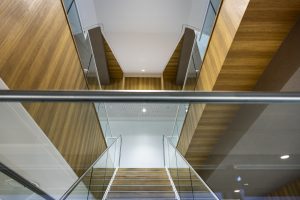Office Space Solutions for Growing Tech Companies in California [2025].

Key Takeaways
- Identify optimal office space locations aligned with talent acquisition and business growth objectives
- Develop scalable commercial office space strategies that adapt to rapid headcount expansion
- Implement flexible workplace strategy frameworks supporting hybrid work models and collaborative innovation
- Navigate California’s complex real estate market with expert guidance on lease negotiations and space planning
- Integrate technology infrastructure and sustainability requirements into office space selection criteria
- Balance immediate commercial office space needs with long-term growth projections and market flexibility
Understanding California’s Commercial Office Space Market for Tech Companies
Market Dynamics and Growth Trends
California’s commercial office space market in 2025 reflects the technology sector’s evolution toward hybrid work models, sustainability mandates, and flexible growth strategies. Office space availability varies significantly across regions, with established tech corridors commanding premium rates while emerging markets offer strategic opportunities for growing companies.
Key Market Characteristics:
- Silicon Valley maintains the highest commercial office space costs globally, driving companies to explore alternative locations
- San Francisco’s office space market shows increasing flexibility in lease terms and tenant improvement allowances
- Los Angeles and San Diego tech corridors offer competitive office space alternatives with strong talent pools
- Secondary markets like Sacramento, Fresno, and inland regions provide cost-effective expansion opportunities
Technology Sector Space Requirements: Modern tech companies require office space solutions that support collaborative innovation, flexible work arrangements, and rapid scaling capabilities. Workplace strategy considerations include open collaboration areas, private focus zones, technology infrastructure capacity, and amenities that attract and retain top talent.
Regional Analysis for Commercial Office Space Strategy
Silicon Valley – Premium Innovation Hub: Despite premium costs, Silicon Valley commercial office space offers unparalleled access to venture capital, talent networks, and industry partnerships. Growing tech companies often establish flagship locations here while distributing operational functions across more cost-effective markets.
San Francisco – Urban Tech Center: San Francisco’s office space market provides urban lifestyle amenities and public transportation access highly valued by tech talent. The city’s commercial office space options range from historic renovated buildings to modern high-rise developments with advanced technology infrastructure.
Los Angeles – Diversified Tech Ecosystem: LA’s expanding tech sector offers office space opportunities in entertainment technology, aerospace, and consumer applications. Commercial office space costs remain more accessible than Bay Area markets while providing access to diverse talent pools and industry networks.
Emerging Markets – Strategic Growth Opportunities: Secondary California markets offer office space solutions with favorable economics and growing tech communities. Companies can establish regional operations, satellite offices, or relocated headquarters while maintaining California market presence.
Strategic Office Space Planning for Scaling Tech Companies
Growth-Phase Workplace Strategy Framework
Successful workplace strategy for growing tech companies requires systematic approaches to space planning that accommodate rapid organizational changes while maintaining operational efficiency and company culture.
Scalability Assessment:
- Analyze current headcount and project 18-24 month growth scenarios
- Evaluate space utilization patterns and identify optimization opportunities
- Consider remote work policies and their impact on office space requirements
- Plan for contractor, consultant, and temporary staff accommodation needs
Flexibility Requirements: Modern commercial office space solutions must adapt to changing business conditions, team structures, and work patterns. Growing companies benefit from lease terms and space configurations that support rapid scaling without excessive costs or operational disruption.
Technology Infrastructure and Commercial Office Space Integration
Office space selection for tech companies requires comprehensive evaluation of technology infrastructure capabilities, connectivity options, and expansion potential for IT systems.
Critical Technology Considerations:
- Fiber connectivity and redundant internet service provider options
- Electrical capacity supporting high-density computing and server requirements
- HVAC systems capable of managing heat loads from technology equipment
- Security infrastructure for intellectual property protection and compliance requirements
Future-Proofing Strategies: Plan commercial office space technology integration with consideration for emerging requirements including AI computing infrastructure, enhanced cybersecurity systems, and sustainable technology initiatives.
Explore our Technology Infrastructure Planning services for comprehensive IT integration support.
Hybrid Work Integration and Workplace Strategy
The post-pandemic workplace strategy landscape requires office space solutions that seamlessly integrate remote work capabilities with in-person collaboration and innovation activities.
Hybrid-Optimized Space Design:
- Flexible meeting spaces supporting both in-person and remote participants
- Collaborative zones designed for spontaneous interaction and innovation
- Private work areas for focused individual tasks and confidential communications
- Social spaces that strengthen company culture and team relationships
Technology-Enabled Collaboration: Implement office space technology systems that support seamless hybrid work experiences including advanced video conferencing, digital whiteboarding, and integrated communication platforms.
Commercial Office Space Selection Criteria for Tech Companies
Location Strategy and Talent Acquisition Alignment
Office space location decisions significantly impact talent acquisition capabilities, operational efficiency, and long-term business success. Strategic location selection requires analysis of multiple factors beyond simple cost considerations.
Talent Access and Retention:
- Proximity to universities and technical training programs
- Public transportation accessibility for diverse workforce demographics
- Neighborhood amenities including dining, retail, and recreational options
- Parking availability and alternative transportation support
Business Network Integration: Consider commercial office space locations that provide access to industry networks, potential clients, and strategic partnership opportunities while supporting business development objectives.
Lease Negotiation and Financial Optimization
Effective commercial office space lease negotiation requires understanding market conditions, landlord motivations, and long-term business implications of various lease structures and terms.
Key Negotiation Elements:
- Base rent and escalation provisions aligned with growth projections
- Tenant improvement allowances supporting technology infrastructure requirements
- Expansion rights and options for additional office space as companies scale
- Subletting and assignment rights providing flexibility for changing business needs
Financial Planning Considerations: Structure office space lease agreements that optimize cash flow management during growth phases while providing operational flexibility and risk mitigation.
Learn more about our Facility Management solutions for ongoing commercial office space optimization.
Case Study: Series B Tech Company Office Space Expansion
Project Challenge
A fast-growing cybersecurity company needed to expand from 15,000 to 45,000 square feet of office space in Silicon Valley while maintaining operational continuity and supporting 200% headcount growth over 18 months.
Complex Requirements:
- Maintain existing lease obligations while securing additional commercial office space
- Integrate secure development environments and compliance-ready meeting facilities • Support hybrid work models with flexible collaboration spaces
- Achieve LEED certification alignment with company sustainability commitments
Strategic Workplace Strategy Approach
Multi-Phase Expansion Planning: Our workplace strategy team developed a phased expansion approach allowing the company to maintain operations while progressively scaling office space capacity aligned with hiring milestones and funding availability.
Integrated Space Design: Rather than treating expansion as separate commercial office space additions, we designed integrated environments supporting cross-team collaboration, knowledge sharing, and company culture preservation during rapid growth.
Technology Infrastructure Scaling: Working with IT leadership, we implemented scalable infrastructure supporting current security requirements while providing flexibility for advanced cybersecurity research and development needs.
Office Space Expansion Results
Performance Metrics:
- Timeline: Completed expansion 4 weeks ahead of hiring timeline requirements
- Budget: Achieved 12% cost savings through strategic lease negotiation and space optimization
- Functionality: Post-occupancy surveys showed 85% employee satisfaction with new office space design
- Scalability: Infrastructure supports additional 50% headcount growth without major modifications
Key Success Factors in Commercial Office Space Expansion:
- Early integration of workplace strategy with business growth planning
- Comprehensive technology infrastructure assessment and future-proofing
- Strategic lease negotiation aligned with growth projections and market conditions
- Systematic change management supporting cultural continuity during expansion
Advanced Workplace Strategy for California Tech Companies
Sustainability Integration and ESG Compliance
California’s regulatory environment and market expectations increasingly require office space solutions that demonstrate environmental responsibility and social impact awareness.
Green Building Requirements:
- LEED certification and energy efficiency optimization
- Sustainable transportation integration including EV charging infrastructure
- Waste reduction and circular economy principles in commercial office space operations
- Indoor air quality and wellness-focused design standards
Social Impact Considerations: Consider workplace strategy elements that support diversity, equity, and inclusion objectives while contributing to local community development and economic opportunity.
Innovation Space Design and Collaboration Optimization
Growing tech companies require office space configurations that foster innovation, support diverse work styles, and accommodate evolving project requirements.
Innovation-Focused Space Types:
- Maker spaces and prototyping areas for hardware development companies
- Secure collaboration zones for intellectual property development
- Flexible project rooms supporting cross-functional team initiatives
- Informal interaction spaces encouraging spontaneous knowledge sharing
Measurement and Optimization: Implement workplace strategy analytics to understand space utilization patterns, optimize layouts, and support data-driven decisions about commercial office space modifications and expansions.
Discover our ESG Compliance Solutions for sustainable office space development.
Regional Market Insights and Opportunities
Silicon Valley Office Space Market Analysis
Current Market Conditions: Silicon Valley’s commercial office space market shows increasing landlord flexibility while maintaining premium pricing for high-quality properties. Growing companies can leverage market conditions for favorable lease terms while accessing world-class innovation ecosystems.
Strategic Opportunities:
- Sublease opportunities from larger tech companies optimizing office space utilization
- Emerging submarkets offering modern facilities with reduced commute times
- Mixed-use developments providing integrated work-life-balance amenities
San Francisco Commercial Office Space Trends
Market Evolution: San Francisco’s office space market reflects the technology sector’s shift toward hybrid work models with increased emphasis on collaboration-focused designs and flexible lease structures.
Growth Company Advantages:
- Reduced competition for premium commercial office space properties
- Enhanced tenant improvement allowances supporting technology infrastructure needs
- Access to public transportation reducing employee commute burdens
Los Angeles Tech Corridor Expansion
Emerging Opportunities: LA’s growing tech sector creates office space opportunities in established markets like Santa Monica, Playa Vista, and downtown LA, plus emerging areas in Culver City and Hollywood.
Competitive Advantages:
- Lower commercial office space costs compared to Bay Area markets
- Access to entertainment industry partnerships and creative talent pools
- International business connections supporting global expansion strategies
Workplace Strategy Implementation and Change Management
Transition Planning for Office Space Changes
Successful office space transitions require systematic planning that minimizes business disruption while maximizing employee engagement and operational efficiency.
Pre-Transition Preparation:
- Comprehensive communication strategies explaining workplace strategy changes and benefits
- Technology migration planning ensuring seamless IT infrastructure continuity
- Furniture and equipment coordination supporting business continuity during moves
Post-Transition Optimization: Monitor commercial office space utilization and employee feedback to identify optimization opportunities and address any operational challenges proactively.
Cultural Integration and Employee Experience
Office space changes provide opportunities to strengthen company culture while supporting business growth objectives through thoughtful workplace strategy implementation.
Culture Preservation Strategies:
- Design elements reflecting company values and mission
- Collaboration spaces supporting established team dynamics and communication patterns
- Amenities and services that demonstrate investment in employee experience
Growth Adaptation: Plan commercial office space configurations that accommodate cultural evolution as companies scale while maintaining core values and operational effectiveness.
Financial Planning and ROI Optimization
Office Space Investment Analysis
Strategic commercial office space decisions require comprehensive financial analysis considering immediate costs, long-term value creation, and opportunity costs of alternative approaches.
Cost-Benefit Framework:
- Direct occupancy costs including rent, utilities, and operational expenses
- Productivity impacts from improved workplace strategy and employee satisfaction
- Talent acquisition and retention advantages from strategic location and amenities
- Brand value enhancement through premium office space presence in key markets
Growth Scenario Planning: Model office space costs and requirements across various growth scenarios to optimize lease terms and space configurations for different business outcomes.
Lease Structure Optimization
Commercial office space lease negotiations should align with business growth patterns, cash flow management, and strategic flexibility requirements.
Strategic Lease Elements:
- Graduated rent structures aligned with revenue growth projections
- Expansion options supporting scaling requirements without relocation disruption
- Early termination rights providing flexibility for changing business conditions
- Subletting provisions enabling space optimization as business needs evolve
Review our Commercial Real Estate Case Studies for additional office space optimization examples.
Technology Integration and Future-Proofing
Smart Building Integration for Tech Companies
Modern office space selection increasingly requires evaluation of smart building capabilities, IoT integration, and data analytics platforms supporting operational efficiency and employee experience optimization.
Smart Building Capabilities:
- Environmental controls responsive to occupancy patterns and preferences
- Security systems integrating with corporate IT infrastructure and policies
- Space utilization analytics supporting workplace strategy optimization and planning • Energy management systems aligning with sustainability objectives and cost control
Integration Planning: Plan commercial office space technology integration with consideration for corporate IT policies, security requirements, and future expansion needs.
Cybersecurity Considerations for Office Space
Growing tech companies require office space solutions that support comprehensive cybersecurity strategies while enabling collaboration and productivity.
Physical Security Integration:
- Access control systems compatible with corporate identity management
- Secure areas for sensitive development activities and intellectual property protection
- Network segmentation supporting both collaboration and security requirements
- Compliance-ready environments for customer meetings and regulatory discussions
Infrastructure Security: Evaluate commercial office space technology infrastructure for cybersecurity capabilities, including network isolation, monitoring capabilities, and incident response support.
Market Outlook and Future Trends
California Office Space Market Evolution
The commercial office space market in California continues evolving in response to technology sector trends, regulatory changes, and workforce expectations.
Emerging Trends:
- Increased demand for flexible lease terms supporting business agility
- Growing emphasis on wellness and sustainability in office space design
- Integration of hybrid work support technology in commercial office space infrastructure
- Focus on community and collaboration spaces supporting company culture development
Strategic Implications: Growing tech companies should plan workplace strategy initiatives with consideration for continuing market evolution and changing employee expectations.
Technology Impact on Workplace Strategy
Advancing technologies continue reshaping office space requirements and workplace strategy optimization opportunities for tech companies.
Innovation Areas:
- AI-powered space utilization optimization and predictive planning
- Advanced collaboration technologies supporting distributed team integration
- Sustainable building technologies reducing operational costs and environmental impact
- Health and wellness monitoring systems supporting employee productivity and satisfaction
Planning Considerations: Consider commercial office space selections that provide flexibility for technology integration and adaptation as innovations become standard business tools.
Conclusion: Strategic Office Space Planning for Sustainable Growth
Strategic office space planning for growing tech companies in California requires balancing immediate operational needs with long-term growth objectives while navigating complex market conditions and evolving workforce expectations. Success depends on systematic workplace strategy development that integrates talent acquisition, operational efficiency, and cultural development objectives.
Ready to Optimize Your Office Space Strategy?
Transform your commercial office space approach with proven strategies tailored to growing tech companies in California. Our team specializes in workplace strategy development, lease negotiation, and technology integration supporting scalable business growth.



